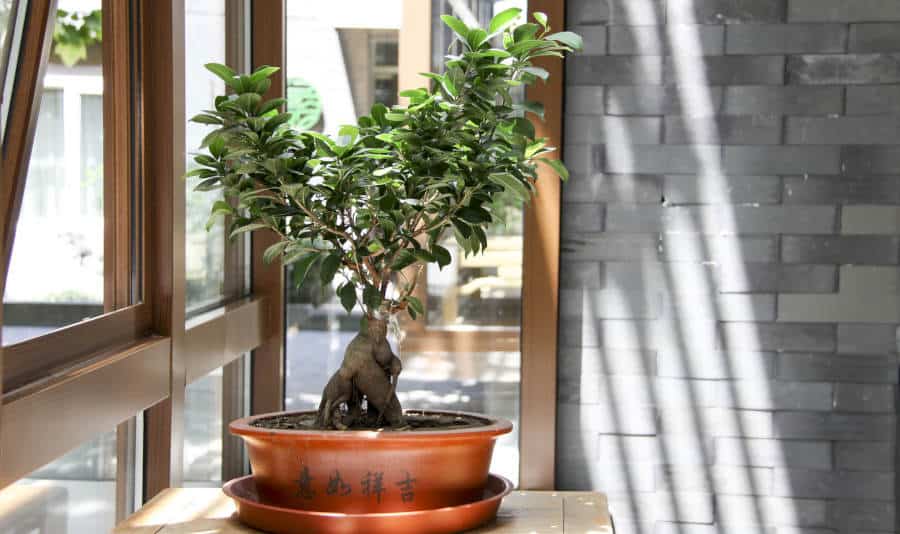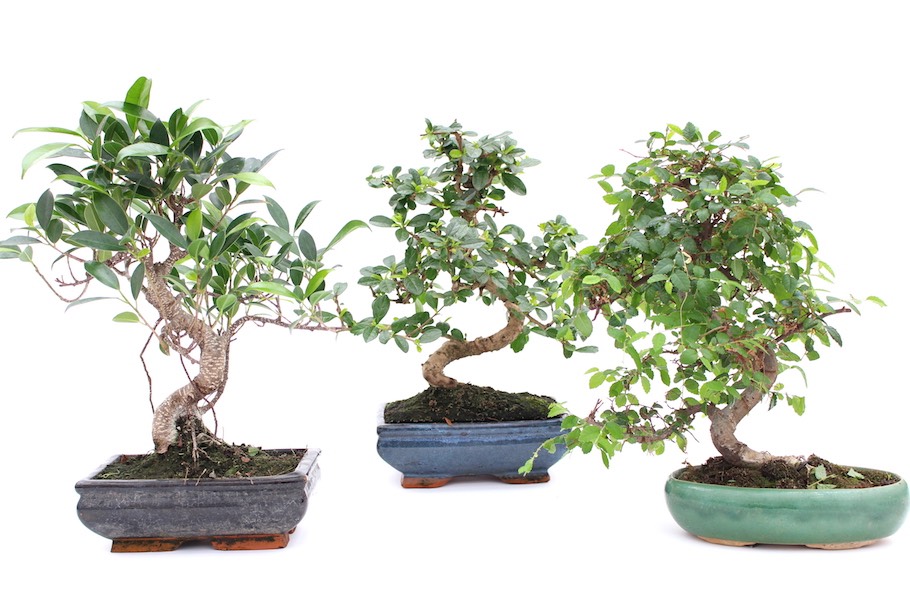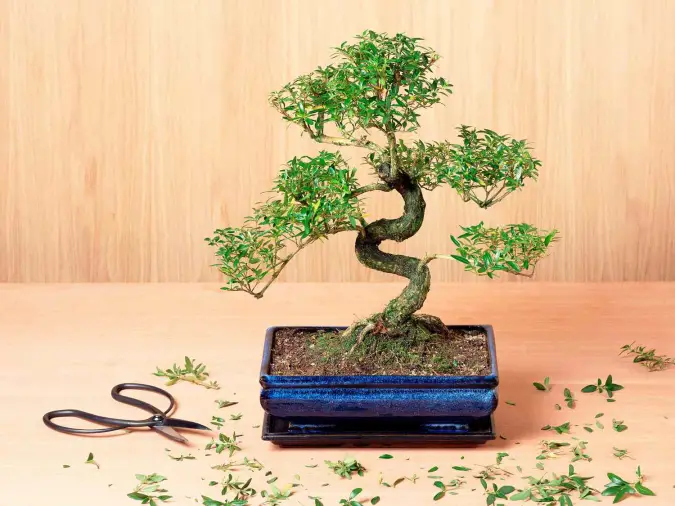Ficus, Jade, and Chinese Elm bonsai trees can be grown indoors. These species thrive in controlled indoor environments.
Growing bonsai trees indoors offers a unique and fulfilling hobby. Indoor bonsai trees add beauty and tranquility to any living space. Ficus, Jade, and Chinese Elm are popular choices for indoor cultivation. These species adapt well to indoor conditions and require minimal care.
Which Bonsai Trees Can Be Grown Indoors: They thrive with adequate light, humidity, and proper watering. Indoor bonsai trees also purify the air and enhance the aesthetic appeal of your home. Selecting the right species and providing the necessary care ensures a healthy and vibrant bonsai tree. Embrace the art of bonsai and transform your indoor space into a serene oasis.

Credit: bonsaigenie.com
Table of Contents
Introduction To Indoor Bonsai Trees
Bonsai trees are small and elegant. They add beauty to any room. They fit well in small spaces. Indoor bonsai trees are easy to care for. They bring nature inside your home. They are perfect for beginners.
The art of bonsai started in Japan. It requires patience and care. Bonsai means “planted in a container.” The goal is to create mini trees. They look just like full-sized trees. This art form is very relaxing. It helps you connect with nature.
Indoor bonsai trees have many benefits. They clean the air. They reduce stress and anxiety. They make your home look beautiful. Caring for them teaches responsibility. They are great for kids and adults. Bonsai trees also improve focus and concentration.
:max_bytes(150000):strip_icc()/ML_Grow_Bonsai-8-2000-54d3d1a7424b4359b44e52383f40b834.jpg)
Credit: www.midwestliving.com
Which Bonsai Trees Can Be Grown Indoors: Essentials For Indoor Bonsai Cultivation
Ficus, Jade, and Chinese Elm are ideal indoor bonsai trees. These species thrive with proper light and humidity. Suitable for beginners, they adapt well to indoor environments.
Choosing The Right Soil
The soil must be well-draining. It should retain some moisture but not stay too wet. A mix of akadama, pumice, and lava rock is ideal. Avoid garden soil; it’s too dense. Use a commercial bonsai mix if unsure. Ensure the soil has good aeration. This helps the roots breathe.
Lighting Requirements
Indoor bonsai need bright light. Place them near a south-facing window. If natural light is insufficient, use grow lights. Ensure the light is on for at least 6 hours a day. Rotate the tree regularly. This ensures even growth.
Watering Techniques
Water the bonsai when the topsoil feels dry. Use a watering can with a fine spout. Water until it drains from the bottom. Avoid overwatering; it causes root rot. Mist the leaves daily. This increases humidity around the tree.
Popular Indoor Bonsai Varieties
Ficus Bonsai is a popular choice for indoor bonsai. Its thick, glossy leaves make it visually appealing. It thrives well in low light conditions. Ficus Bonsai is resilient and can tolerate occasional neglect. This variety is also easy to shape and prune. It is ideal for beginners due to its hardiness. Regular watering is essential, but avoid overwatering.
Jade Plant is another excellent indoor bonsai. Its succulent leaves retain water, making it low-maintenance. This plant prefers bright light but can adapt to lower light levels. Overwatering can cause root rot, so water sparingly. Its thick, woody stems give it a tree-like appearance. Jade Plant is also known for its longevity and ease of care.
Chinese Elm is a favorite among bonsai enthusiasts. Its small, serrated leaves and fine branching make it attractive. This variety thrives in indirect sunlight and prefers a humid environment. Regular pruning helps maintain its shape. It is resistant to pests and diseases. Consistent watering is crucial for its health, ensuring the soil stays slightly moist.
Caring For Your Indoor Bonsai
Pruning helps your bonsai stay small and healthy. Use sharp scissors for clean cuts. Trim branches that grow too long. This keeps the tree balanced. Shaping can be done with wire. Wrap the wire around branches. Bend them gently to the desired shape. Check the wire often to avoid damage.
Bonsai trees need nutrients to grow well. Use a balanced fertilizer. Feed your bonsai every two weeks during the growing season. Water the tree before and after fertilizing. Over-fertilizing can harm the tree. Follow the instructions on the fertilizer package.
Indoor bonsai trees can get pests. Check your tree regularly for signs. Look for yellow leaves or small insects. Use insecticidal soap to treat pests. Diseases can affect your bonsai too. Remove infected leaves to stop the spread. Keep the area clean around your bonsai.
Creating The Ideal Environment
Discover the perfect indoor bonsai trees, like the Ficus, Jade, and Chinese Elm. These species thrive in controlled environments, adding natural beauty to your home. Proper lighting and humidity are key for their growth.
Temperature And Humidity
Indoor bonsai trees need a stable temperature. Keep the room between 60°F to 75°F. These trees also need the right humidity. Use a humidity tray under the pot. This helps in keeping the air moist. Another way is to mist the leaves daily. This keeps them fresh and healthy. Avoid dry air from heaters or air conditioners. This can harm the bonsai.
Pot Selection
The pot for a bonsai tree is important. It should have drainage holes. This stops water from staying in the soil. Choose a pot that is small but deep enough. This gives the roots room to grow. The pot should also be heavy enough to balance the tree. Bonsai pots come in many shapes and colors. Pick one that you like and suits your decor.
Positioning Your Bonsai
Place your bonsai tree in a spot with bright, indirect light. Direct sunlight can burn the leaves. A window facing east or west is ideal. Avoid placing the tree near vents or drafts. This can cause temperature changes. Turn the tree every week. This ensures all sides get light. This helps the bonsai grow evenly. A good position keeps the tree healthy and strong.
Troubleshooting Common Indoor Bonsai Problems
Yellowing leaves can be a sign of overwatering. Check the soil’s moisture level. Underwatering may also cause yellow leaves. Ensure the bonsai gets enough light. Pest infestations might turn leaves yellow. Inspect the plant for bugs. Nutrient deficiencies can lead to yellow leaves. Use a balanced fertilizer.
Dropping leaves often indicates stress. Ensure the bonsai is in the right environment. Sudden changes in light can cause leaves to drop. Keep the temperature stable. Overwatering or underwatering might make leaves fall. Adjust the watering schedule. Pests can also cause leaf drop. Check for bugs.
Stunted growth might be due to poor soil quality. Use a well-draining soil mix. Insufficient light can slow down growth. Place the bonsai in a bright spot. Incorrect pruning may also stunt growth. Prune the tree correctly. Nutrient deficiencies can hinder growth. Apply a balanced fertilizer.
Advanced Techniques For Bonsai Enthusiasts
Wiring helps shape your bonsai tree. Use thin wire to bend branches. Be careful to not damage the bark. Wrap the wire firmly but gently. Remove the wire after a few months. This keeps the tree healthy.
Grafting joins two plants into one. Cut a branch from a healthy tree. Attach it to another tree’s trunk. Secure with tape until it heals. This technique is useful for changing tree styles. Also, it can help fix weak branches.
Creating landscapes involves arranging multiple bonsai trees. Use rocks, moss, and small plants to make a scene. This adds beauty to your bonsai display. Choose trees that grow well together. Arrange them to look natural. This technique brings your bonsai to life.
Incorporating Bonsai Into Interior Design
Choosing the right pot is essential for your bonsai tree. The pot must complement the tree’s size and style. Small pots suit delicate trees, while larger pots fit robust trees. The color of the pot should enhance the tree’s beauty. Neutral tones like brown or beige are versatile. Glazed pots offer a more decorative touch. Ensure the pot has drainage holes to prevent waterlogging.
Adding complementary plants enhances your bonsai’s beauty. Moss is a popular choice; it covers the soil and retains moisture. Mini ferns add a lush, green touch. Small flowering plants can add color. Succulents are low-maintenance and blend well. Grouping these plants creates a balanced look.
Displaying your bonsai is crucial for interior design. Place it on a sturdy table or shelf. Ensure it gets indirect sunlight. Use a display stand to elevate the tree. Rotating the bonsai ensures even growth. Accent pieces like rocks or figurines add visual interest. The bonsai should be the focal point of the display.
Continuing Your Bonsai Journey
Joining a bonsai club can be very rewarding. You will meet many people who share your interest. Clubs often have resources and tools for members. Members can offer advice and tips on growing bonsai. It is a great way to learn and improve your skills.
Workshops provide hands-on learning experiences. You can practice new techniques under the guidance of experts. Workshops often cover specific topics like pruning or wiring. Attending one can help you overcome challenges in your bonsai journey.
As you gain confidence, try growing advanced species of bonsai. These trees may need special care and attention. Examples include Japanese Maple and Chinese Elm. Growing advanced species can be very satisfying and rewarding.

Credit: www.bonsaiempire.com
Frequently Asked Questions
Which Bonsai Can Be Grown Indoors?
Ficus, Jade, Chinese Elm, and Dwarf Schefflera are ideal indoor bonsai trees. They thrive in low light and require minimal care.
How Do I Know If My Bonsai Tree Is Indoor Or Outdoor?
Check the species of your bonsai tree. Tropical and subtropical species are typically indoor. Temperate species prefer outdoor conditions.
What Is The Best Low Maintenance Bonsai Tree?
The Ficus bonsai tree is the best low maintenance option. It thrives indoors, tolerates low light, and requires minimal care.
How Do You Keep An Indoor Bonsai Tree Alive?
Water regularly, ensuring soil stays moist but not soggy. Provide plenty of natural light. Use well-draining soil. Prune to maintain shape and health. Fertilize monthly during the growing season.
Conclusion
Choosing the right bonsai tree for indoors can enhance your living space. Opt for species that thrive in indoor conditions. Ficus, Jade, and Chinese Elm are excellent choices. These trees require minimal care and adapt well to indoor environments. Enjoy the beauty of bonsai in your home.
Happy gardening!
